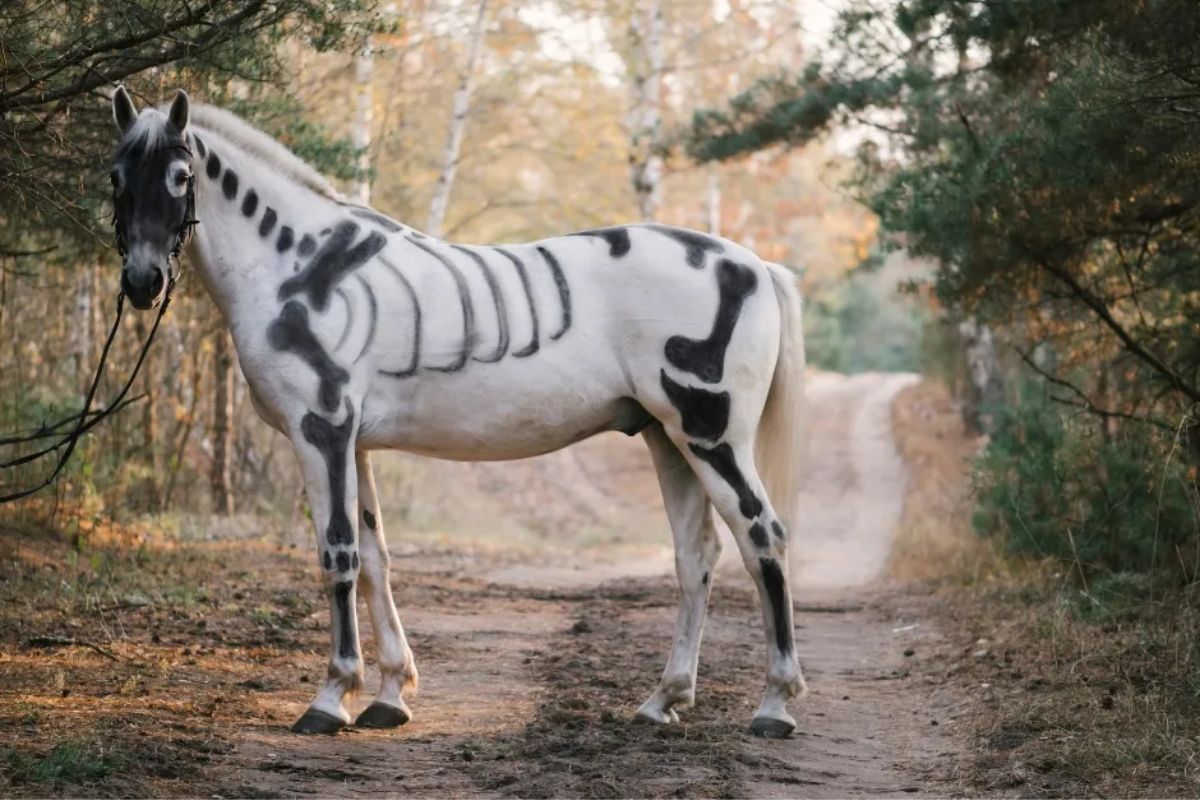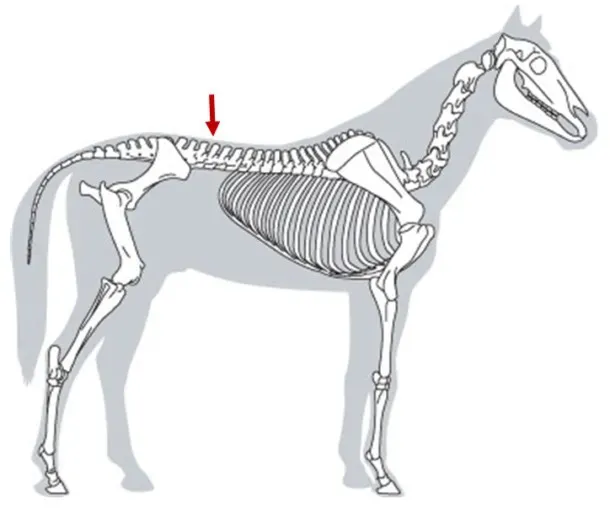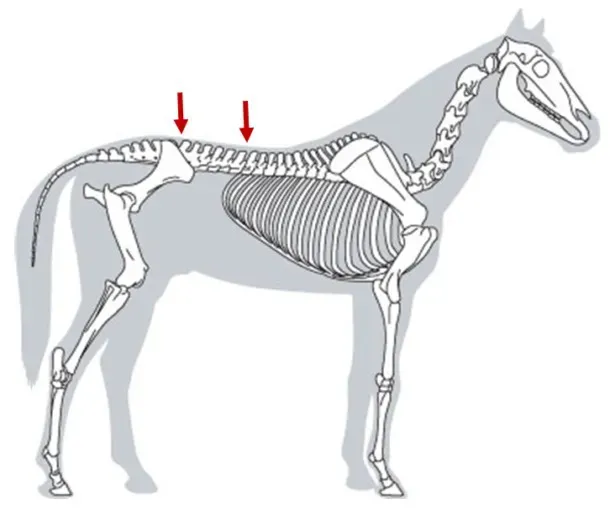Menu

In my daily rounds through the stables, I frequently encounter a considerable number of horses with varying degrees of back issues. There could be multiple different causes for this, and back problems can manifest in many different ways. The horse's back is, in many ways, a vulnerable spot, and can almost seem like a 'hotspot' for various issues. If a horse has mid-back pain, it often prefers cantering over trotting - especially during warm-up. Horses with back pain often stand with a lowered back and their hind legs slightly extended. For some horses, you may see the muscles around the back diminishing, while for others, there's an overdevelopment of back muscles, and yet others show asymmetric musculature around the back.

Many of the horses I meet that have back issues struggle with their lumbar vertebrae rotating or locking relative to each other. This doesn't imply the vertebrae are dislocated, but that they sometimes twist slightly relative to each other, and occasionally they get locked into an inconvenient position by the surrounding muscles. When this occurs, it results in a reduction in the flexibility of the back, to a greater or lesser degree. Furthermore, both the nerves emerging from the spinal cord between the lumbar vertebrae, and the corresponding blood vessels, are affected by these rotations and lockings of the vertebrae, impacting the skin, muscles, and organs. Besides the horse often showing signs of pain in the back itself, such horses often show signs of discomfort around the flanks. Many horses with back problems frequently need to urinate - especially when ridden - due to the impact on the kidney and bladder, and the horses can have reproduction issues due to the impact on the sexual organs. But also issues with the gastrointestinal system can originate from this, as can circulation issues and swelling of the hind legs.
Read also: Horse age vs. human age – How old is your horse?
If the horse has pain at the junction between the thoracic vertebrae and lumbar vertebrae, or between the lumbar vertebrae and sacrum, it often has trouble cantering, and often times you'll see the horse cross-cantering. When the lumbar vertebrae rotate or lock relative to each other, there's often a contraction of the muscles on one side of the back, sometimes so extreme that you can see the back curving. This pulls the pelvis forward and down on the side where the muscles are tense/shortened, making the entire pelvis tilt. This means that the horse starts to load the hind legs unevenly, which often results in knee pain. It's not uncommon that a hind leg lameness can originate from an issue around the back. With some horses, you might just find that it's difficult to ride them in one direction, have trouble with lateral movements on one side, are difficult to straighten out and prefer to move on two tracks, and often showjumping horses start throwing their hind legs to one side over the jump, or perhaps always land in the same canter after the jump. Another issue often seen with horses that have problems with the lumbar vertebrae rotating or locking in relation to each other, is that the saddle starts to sit skewed, especially towards the back.

But also neck problems can originate from the back, as a tilted pelvis will cause the rest of the spine to have to compensate, often resulting in the first neck vertebrae also rotating. When this happens, you often find that the horse has balance issues. This is due to the first cervical nerves emerging amongst the horse's first neck vertebrae, and these nerves send many small sensory nerves out into the muscles, constantly sending messages to the brain about the body's position relative to the ground. These nerves are therefore a very important part of the horse's balance system, and if these nerves are numbed, the horse loses its ability to walk straight. Therefore, horses with issues in this area will also struggle with balance and may have difficulty walking straight. Other typical symptoms of problems around the first neck vertebrae include general neck pain, the inability to bend the neck in the right place, and the inability to turn the head to one side. This means the horse typically becomes rigid, resists the bit, tosses its head, stretches its head far forward and/or holds its head crookedly. Furthermore, these horses are often ear-shy around one or both ears.
Sometimes the spiral runs the other way, so it's a hind leg lameness that ends up causing back problems. For instance, if the horse has knee pain, or maybe issues with the suspensory ligament, it will result in the horse protecting this area, and therefore not stepping through completely with the hind leg. This means the horse does not carry itself correctly, resulting in the pelvis being lower on one side. When this happens, the muscles start pulling on the lumbar vertebrae, which then typically begin to rotate and lock relative to each other.
Another issue that often correlates with the back is problems around the horse's lower neck vertebrae. This correlates with the fact that the horse's long back muscle starts at the pelvis and back and runs all the way up to the horse's lower neck vertebrae where they attach. When the horse encounters problems here, it will not only mean it can't use its back properly, but also that it becomes very heavy at the front. You typically experience a general stiffness in the lower part of the neck, and often the horse will throw its shoulder out in bends. It's not uncommon for the horse to start stumbling a lot, or to suffer from changing forelimb lameness, which correlates with the nerves affecting the forelegs emerging between the horse's lower neck vertebrae. Even something like girth cramps can sometimes be due to rotations of the horse's lower neck vertebrae.
Read also: Do mares go through menopause?
Be aware that the horse can have other symptoms than those mentioned here, just as these symptoms can also be due to other issues.

Most horses have six lumbar vertebrae (vertebrae lumbales), however, Arabians only have five lumbar vertebrae. The spinous processes on the horse's lumbar vertebrae, just like the spinous processes on the horse's last two thoracic vertebrae, lean forward towards the horse's head. Otherwise, the horse's lumbar vertebrae are characterised by not being connected to the ribs. Instead, the lumbar vertebrae have relatively long and broad transverse processes, which provide good stability. On the last three lumbar vertebrae, there are joint connections between the transverse processes.
The horse's lumbar vertebrae are typically fully developed when the horse is 5½-6 years old.